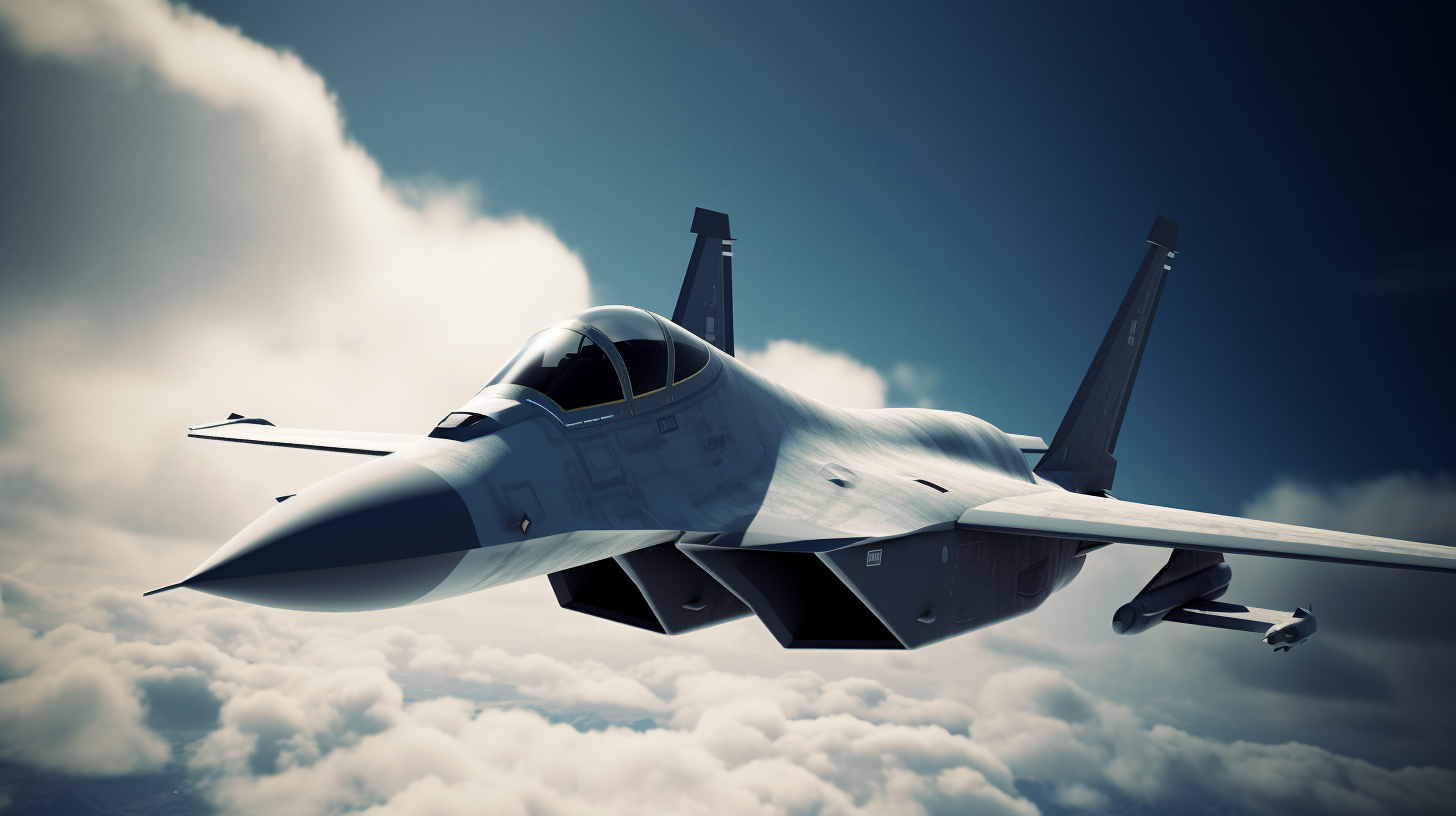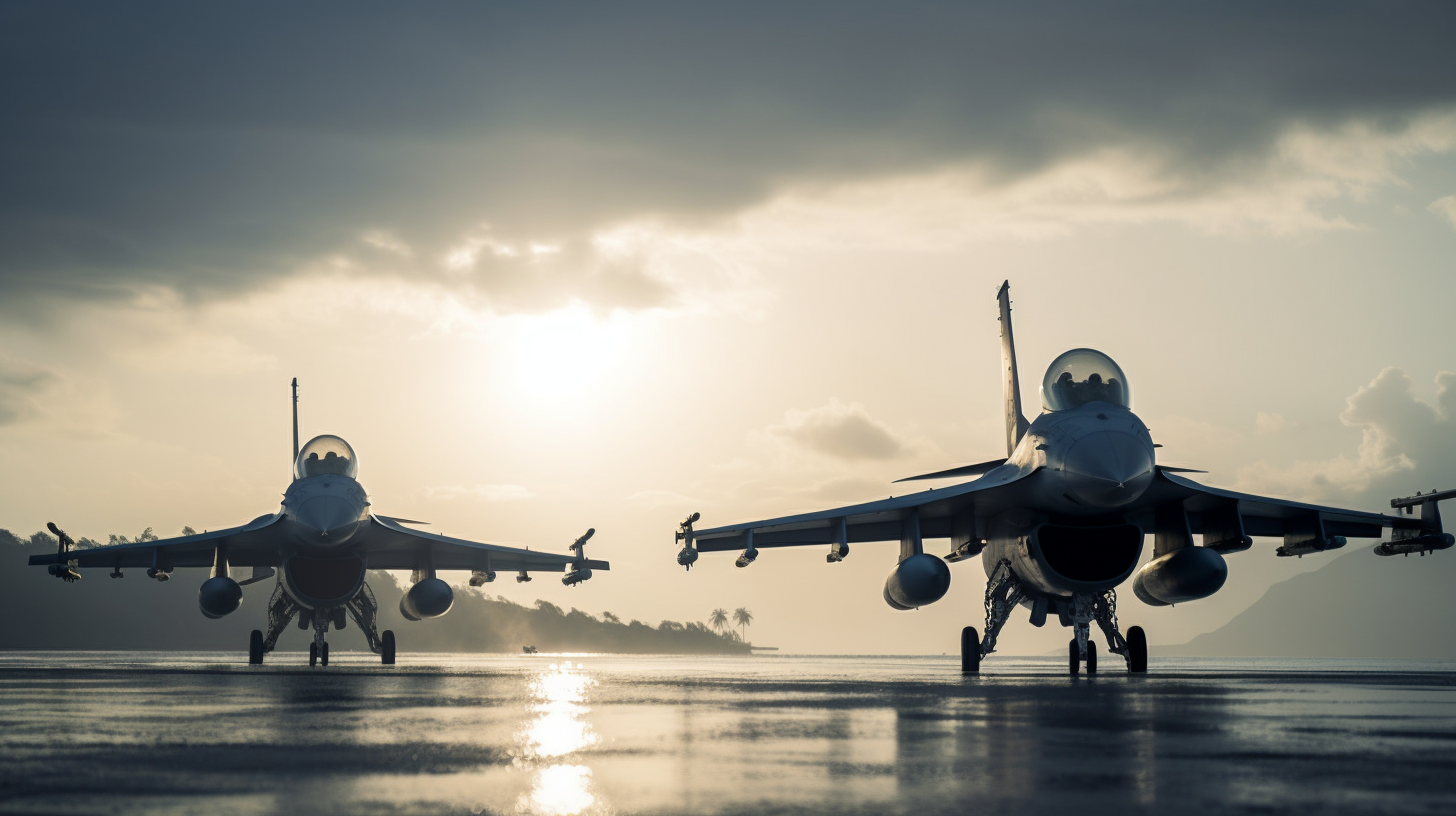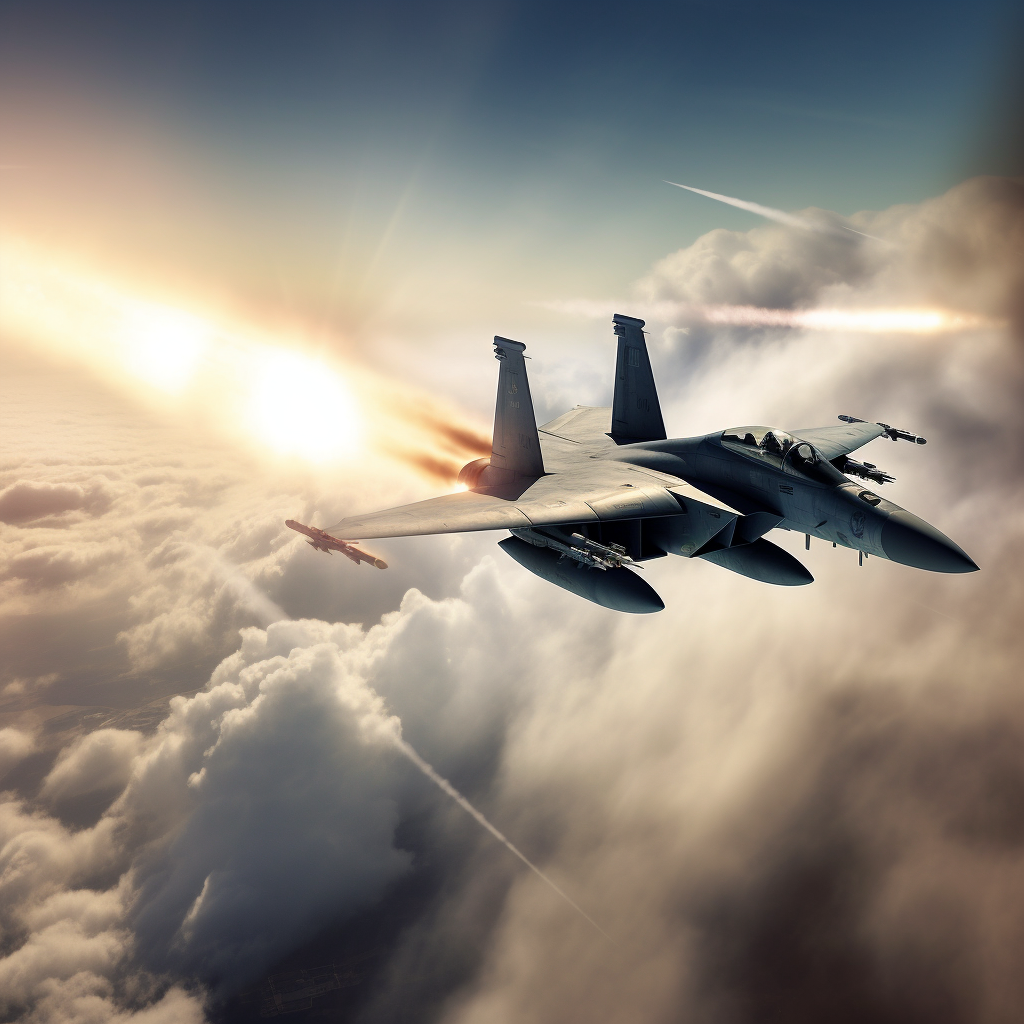Why are fighter jets so loud? Because of…

The roar of a fighter jet soaring across the sky is both awe-inspiring and intimidating, a testament to human ingenuity and the power of technology.
Yet, beneath the marvel and excitement lies a pressing concern – the undeniable loudness of these high-performance aircraft. Jets’ noise can significantly impact our life and the environment, arousing curiosity and worry about what is causing it.
This article delves into the fascinating world of fighter jets, examining the causes of their commotion and the steps taken to lessen its effects.
Understanding why are fighter jest so loud
Fighters are loud due to their powerful jet engines which intake air, mix it with fuel, and release combustion gases at supersonic speeds. This process generates a loud noise.
Interesting right? Keep reading to find more mind-blowing details.

Understanding loudness is important
Due to its potential effects on people and the environment, jets’ high noise is a crucial element to consider.
Improved operational processes and the development of noise reduction technologies can result from understanding the causes of loudness.
The negative impacts on human health, wildlife, and general quality of life for individuals close to air bases or flight patterns can be lessened.
Additionally, educating the public on the causes of the noise might help dispel misconceptions and worries about how fighter jets operate.
Physics behind the loud noise
For jet engines to operate, air must be drawn in from the front, compressed, and mixed with fuel.
A high-pressure stream of exhaust gases is subsequently produced by igniting the fuel-air mixture, which moves the aircraft forward.
The rapid expansion and contraction of these exhaust gases as they are ejected from the engine is the main cause of the noise made by jet engines.
Additional noise is produced by the turbulence the exhaust gases cause.
The role of exhaust gases
A jet engine’s exhaust gases leave at extremely high speeds, frequently supersonic. Pressure waves are produced when these gases interact with the surrounding air.
A loud boom is produced when these pressure waves combine to create strong shockwaves that move into the atmosphere.
The engine’s design, the exhaust gas temperature, velocity, and the noise level all affect each other.
The science behind sonic booms

When an airplane flies faster than the speed of sound, which is roughly 767 mph (1,235 kph) at sea level, sonic booms happen.
The aircraft generates pressure waves in front of and behind it as it flies through the air.
These pressure waves can’t separate quickly enough when an aircraft is traveling faster than the speed of sound, so they combine into a single shockwave and produce a sonic boom.
The boom is felt as a tremor on the ground as well as a loud, unexpected noise.
The effects of breaking the sound barrier
It makes a lot of noise to break the sound barrier and produce a sonic boom. This may result in property damage and a number of health problems, as well as being upsetting for nearby humans and animals.
Sonic booms have a history of breaking windows and interfering with normal life. Because of this, supersonic flight is typically prohibited over populous areas or performed at high altitudes where the impact of the sonic boom is mitigated.
Factors contributing to the loudness of military aircraft
High-Performance engines
To accomplish the high speeds, maneuverability, and quick acceleration required for their missions, jets need strong engines.
These powerful engines’ high thrust output also causes greater noise to be produced. The noise an engine normally makes increases in volume with size and power.
Furthermore, as engine technology develops, the need for higher performance might occasionally come at the expense of higher noise levels.
Afterburners
Some jet engines have afterburners, especially in military aircraft like fighter jets. By pumping more fuel into the exhaust stream, they temporarily increase thrust.
Due to the increased heat and speed of the exhaust gas flow, there is an increase in noise.
A fighter jet’s noise level can be greatly raised by using afterburners, especially during takeoff and maneuvers at high speeds.
Aerodynamics
The sound of a fighter jet can also be affected by the airflow over the body and wings of the aircraft.
Turbulence and noise are produced as a result of the aircraft’s movement through the air, which disturbs the air molecules nearby.
The quantity of noise produced by an airplane might vary depending on its form and design.
For instance, the angular shapes and sharp edges of stealth aircraft might result in complex airflow patterns and higher noise levels.
Supersonic flight
A sonic boom is produced when a fighter jet flies at supersonic speeds, as was previously explained. As a result, there is now a new source of potentially disruptive, loud noise.
To lessen the effects of these sonic booms on the populace and the environment, supersonic flight is frequently prohibited over inhabited areas.
Mitigating the noise of super hornets
Engine improvements
To lessen the noise produced by jet engines, engine makers and researchers are always attempting to create new technologies and materials.
Some of these developments include creating exhaust nozzles that slow down the exhaust flow velocity, adding noise-canceling components to the engine, and creating more effective combustion processes that lessen combustion-related turbulence.
Acoustic treatments
Fighter jet noise can be diminished with the aid of acoustic treatments.
For instance, to help absorb and attenuate noise, specialized coatings or materials can be placed to the exterior of the aircraft.
Additionally, to lessen the effect of noise on neighboring areas, military sites and airports can use acoustic barriers or soundproofing techniques.
Flight paths and altitudes
Adjusting flight paths and altitudes can help mitigate the noise impact of fighter jets.
Flying at higher altitudes can lessen the effect of sonic booms and engine noise on the ground, as the noise dissipates over a larger area.
Additionally, avoiding populated areas when flying at low altitudes or using afterburners can help minimize the disturbance to people and wildlife.
Aircraft Noise abatement procedures
Operational standards called “noise abatement procedures” are meant to reduce the noise an airplane makes in its immediate vicinity.
To lessen noise exposure on the ground, these can include particular takeoff and landing techniques such using lower power settings during takeoff or using steeper descent angles while landing.
Curfews and limits on the schedule of training exercises can also be implemented by military facilities and airports to minimize noise interruptions during sensitive times, such as late at night or early in the morning.
Which aircraft is the loudest?
Due to its unusual propulsion system, the Republic XF-84H Thunderscreech is sometimes regarded as one of the loudest aircraft ever produced. Having a supersonic propeller meant that even when the experimental turboprop aircraft was at rest or moving slowly, the tips of its propeller blades could still achieve supersonic speeds.
The plane’s Allison XT40-A-1 turbine engine, which directly drove a three-blade constant-speed propeller, produced this supersonic propeller. The blade tips of the propeller, which were spinning at rates greater than the speed of sound, produced a continuous sonic boom. The XF-84H Thunderscreech’s notoriously loud roar was caused by this sonic boom.
In addition to the ongoing sonic boom, the propeller’s rapid rotation also resulted in a condition known as “propeller resonance.” In this instance, the inherent frequency of the airframe and the rotational frequency of the propeller coincide, causing the entire aircraft to vibrate and amplifying the noise.
According to reports, the explosion could be heard up to 25 kilometers away. The ground crew and other people were physically uncomfortable and even felt queasy due to the very loud noise and vibrations, earning the aircraft the moniker “Thunderscreech.”
The XF-84H was not a successful aircraft, it should be noted. The project was abandoned in 1956 as a result of the severe technical issues and intolerable noise level, despite just two prototypes being completed.
